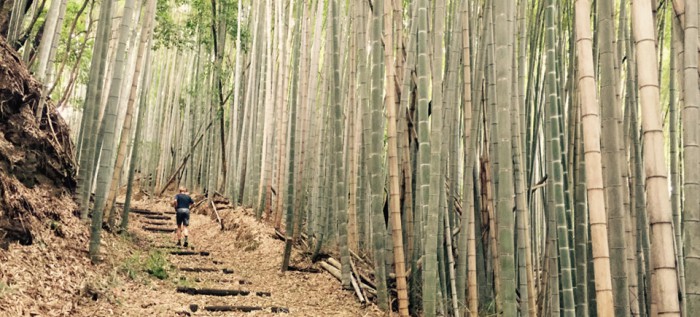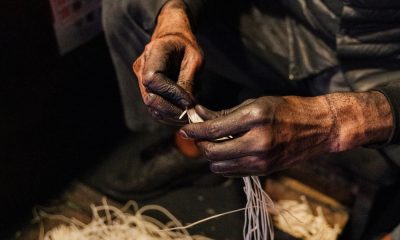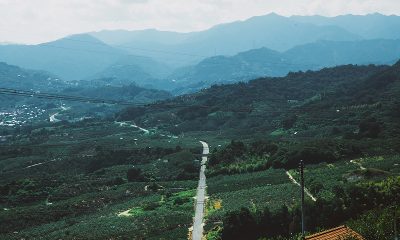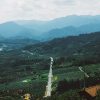Featured
Runner’s High
Looking to slim down after summer? Or perhaps you’re training for one of the upcoming Kansai marathons. Whatever your motivation, there are endless running opportunities at your fingertips.
On the 27th of April 1917, runners representing East Japan and West Japan took off from the Sanjo Bridge in Kyoto and set out on a spectacular 516 km footrace known as the Tokaidoekidentohokyoso, all the way to Ueno in Tokyo.
The epic race was organized by the Yomiuri newspaper to commemorate the 50th anniversary of the transfer of the capital from Kyoto to Tokyo.
In 1920, inspired by the success and popularity of the Tokaidoekidentohokyoso, the now infamous Hakone Ekiden was established with the help of a man named Kanakuri Shizo.
As notorious as the 200 km Hakone Ekiden is, probably more familiar to us in Kansai are the four big city races: the Kyoto, Osaka, Kobe and Nara marathons.
These are in fact all very recent events – the oldest being Nara, which began in 2010 – but Kansai’s marathon history actually goes back much further than that, all the way to 1909.
On March 21st of that year, the very first marathon in Japan took place from Minatogawa in Kobe, to Yodogawa in Osaka. For reasons which are unclear, it was only 32 km in length, but nonetheless 20 keen qualifiers took part and the first-place finisher completed the course in two hours, 10 minutes, and 54 seconds for the winning prize of ¥300.
Commemorative plaques now stand outside Kobe city hall and on the East side of Sanjo bridge in recognition of these two historical running events. One reads, “Kobe – the birthplace of marathon in Japan” and the other reads, “The history of Ekiden starts here.”
There are a wealth of running opportunities in the Kansai region. For those interested in taking up the sport, and perhaps even training to run a full marathon, Kansai is the ideal place to do so.
Inner City Events
The Mukogawa Monthly Marathon in Nishinomiya, Hyogo takes place on the third Sunday of each month. Head down to the winding river on these Sundays and you’ll find crowds of runners gathered just under Japan’s only river-top station, Mukogawa Hanshin.
No registration is required – runners congregate at the start line from around 8am. It is here that you decide on your distance (from 5 km to a full marathon), pay your ¥500, and you’re set to go.
Founded almost 20 years ago, the event is ideal for those looking to venture into the world of running, or for experienced runners who are training for another marathon. Organizer of the Mukogawa Monthly and a marathoner himself, 71-year-old Mataga Masayoshi says, “The great thing about our event is, unlike others, you can just turn up and run. We have lots of beginners, but also many who use this event to practice for the three big marathons at the end of the year.”
The Osaka, Kobe and Nara marathons take place in October, November and December respectively, while the Kyoto marathon is held in February.
In the grounds of the beautiful Osaka Castle, similar paid, monthly events as well as weekly practice runs are held for any who are interested in taking part.
Other monthly events include those in Oizumi Ryokuchi Park and Nagai Park – once home to Osaka’s horseracing venue and now the sports hub of Kansai’s metropolis.
Larger-scale and more-populous events, are the annual half marathons which take place in Nishinomiya, Takarazuka, and on the Yodo River, to name a few.
Simplicity of participation, meeting people with similar interests, and experiencing the atmosphere of an organized meet are just a number of reasons why so many are attracted to these types of events.
Inner City Runs
If events aren’t your thing, however, and you’re simply interested in running for your own personal fitness, head down to one of the following parks on any given day and you’ll find like-minded people laced up and building up their miles.
Utsubo Park in Honmachi is one which doesn’t hold any notable events, yet boasts a wonderful 800-meter circuit around the park – perfect for beginners.
The Kamogawa in Kyoto is another fabulous strip of running track which can take you from Kyoto station (if you keep left at the fork in Demachiyanagi) all the way to Kamigamo Shrine in the north of the city, and further still.
Likewise, the ocean path looping from Naruohama Park and across the bridge to Koshienhama is a wonderful run, made all the better by the feelgood factor of running by the sea.
Outer City
It is not only about running in and around the cities in Kansai, however. Randy Poehlman is a Toyonaka-based ultra/trail runner who writes about his quite unbelievable running endeavors on The Kansai Runner Facebook page.
“The great thing about running in Kansai is that the proximity to mountains is unreal. I can be on a train at 9am and then on a mountain top at 9:45am.”
‘Ultra’ is used to describe any run over the standard 42.195 km of a regular marathon, while ‘trail’ is an offshoot of running which typically takes place on hiking trails and mountainous terrain.
When asked what attracts him to the trails over hitting the inner-city runs, Randy – who names the trails around Arashiyama and Mt. Rokko as among his favorites – said, “the wildlife is amazing and much more interesting than just passing cars. Also, the seasons pass much more noticeably when running on the mountainside or through forest trails.”
City running, trail running, organized or not, there are a plethora of running options for you to choose in Kansai.
Alternatively, if none of the above tickle your fancy, take a run around the block; once you get your first surge of endorphins and the rush of the runner’s high, you’ll never go back.
Happy running!
Useful Information
• Mukogawa Monthly Marathon homepage (Japanese): mukogawa-sc.com
• Details on the paid weekly and monthly events in Kansai (Japanese): funrunkansai.com/page1
• Info on a variety of different running courses in Kansai (Japanese): oct.zaq.ne.jp/afccm103/index.htm
• Randy Poehlman’s Facebook page: facebook.com/TheKansaiRunner





















